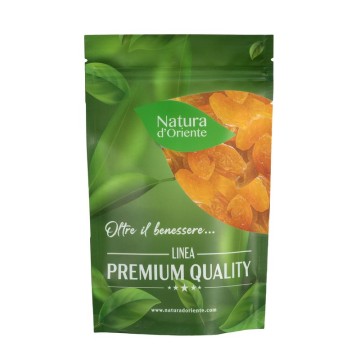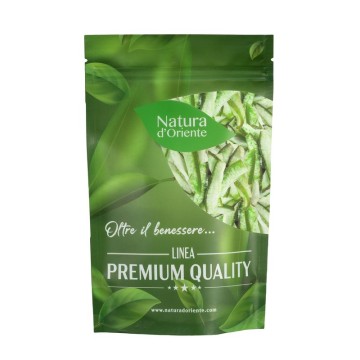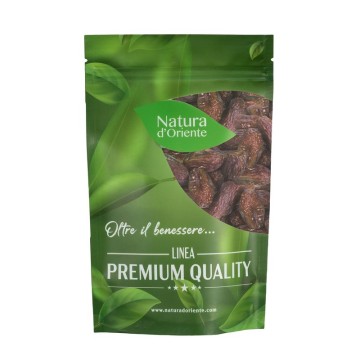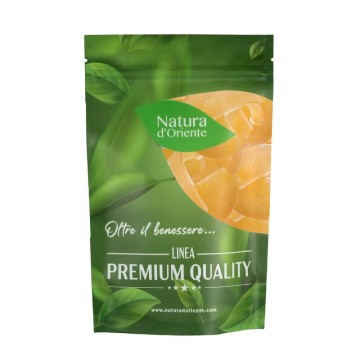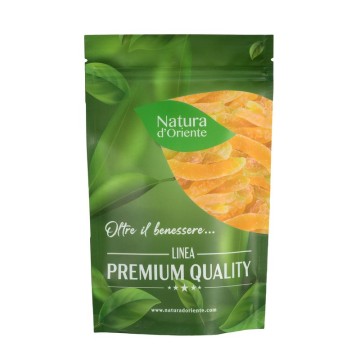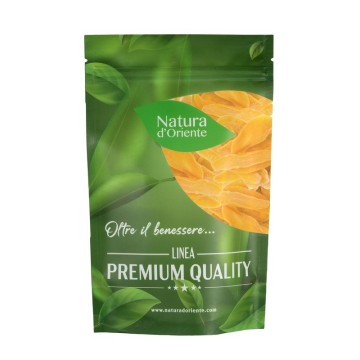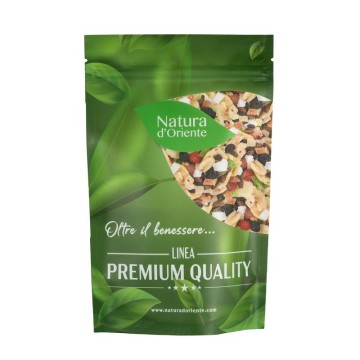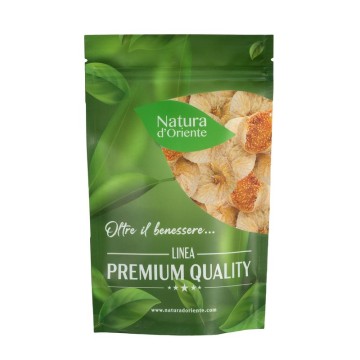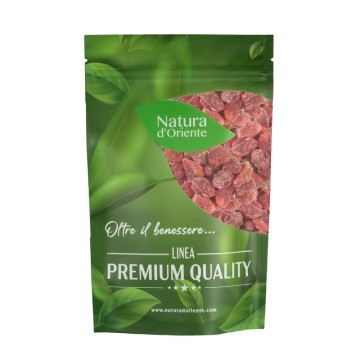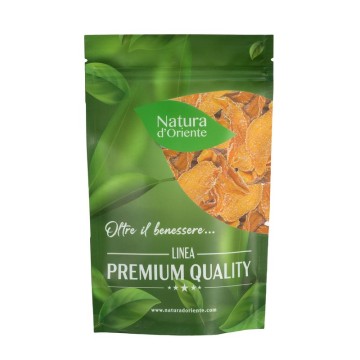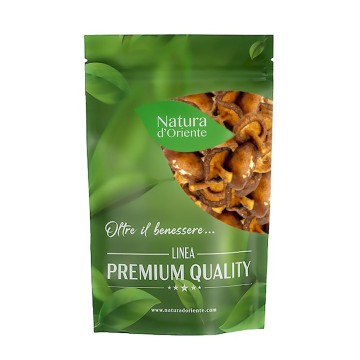Dehydrated mandarin wedges
The mandarin is one of the varieties of orange, a citrus fruit that contains many nutrients, beneficial to the health of our body, as well as being exquisite for its sweet taste. Let's see the nutrients contained in this fruit.
Dehydrated mandarin: properties and benefits
This citrus species has several active ingredients, and some research is still ongoing to better understand its potential. Mainly, tangerines are rich in vitamin C, flavonoids, volatile acids and oils useful for human health.
The mandarin has a high vitamin C content, which stimulates the release of substances beneficial to the skin, such as excellent collagen and elastin. We also know vitamin C improves the health of the immune system.
Even in the dehydrated mandarin version, the fruit is a good source of these antioxidants, capable of preventing tissue ageing.
In particular flavonoids, are known for their ability to contain and lower the level of bad cholesterol in the blood.
They also contain furanocoumarins, such as bergaptene, a substance that protects the skin from sunlight – for this reason, it is sometimes added to tanning preparations. In fact, bergaptene promotes pigmentation in the skin by preparing it for UV rays.
Some of the recent applications of mandarin for the beauty of the body are due to the presence of substances such as vitamin E and vitamin B12, which help the hair by giving it more strength and shine.
In terms of body health, the fruit has historically been used in traditional medicine for the well-being of the digestive system, as an antiemetic, astringent, laxative . Even the peel has often been used to create anti-inflammatory, analgesic and antiseptic preparations. Historically, like many citrus fruits it was used to prevent scurvy.
Even today the properties of the fruit are recognized for gastro-intestinal distension, and for calming the effects of nausea and hiccups. Like many citrus fruits, mandarin is considered a good expectorant ingredient that thins bronchial secretions, and calms cough symptoms.
Its iron content allows the mandarin to be one of the fruits that favors the regular production of hemoglobin, responsible for distributing oxygen to the tissues.
In addition, calcium and potassium present in its composition, are useful for strengthening bones.
In some cultures it has also been considered a calming fruit perhaps because it promotes a sedative action on the nervous system: it contains more bromine than oranges, and can be useful eaten at dinner to promote the sleep. Still on an anti-stress level, mandarin is also a good natural source of folic acid, a substance that regularly helps improve brain function.
The benefits of tangerines for weight loss are due to the fact that the fibers of the fruit calm the appetite, and the dehydrated mandarin version a cloves, represents a valid hunger-busting snack.
Origins and History of cultivation
The mandarin has an undefined origin, but it is thought that the plant botanically appeared in Asia, even before oranges and lemons.
Its cultivation by humans probably began in southern China, one of the cultivation centers of mandarin for millennia.
It was introduced in Europe in recent times, namely in the first half of the nineteenth century and as an ornamental plant.
The mandarin arrived in Malta as a botanical curiosity, and was later cultivated in Sicily where the climate was decidedly favorable for the Havana variety.
It is considered the most fragrant citrus fruit, much coveted for its very sweet taste and its aroma. The difference with other varieties such as tangerines or clementines should also be kept in mind
In addition to the organoleptic properties and the content of essential oils, vitamins and flavonoids, the mandarin, like many fruits, has symbolic properties.
We know the fact that it became the name of a language (Mandarin Chinese) and the emblem of an elite of imperial dignitaries of ancient China - who wore a mandarin-colored robe.
With their wisdom and culture, the "mandarins" interpreted the signs of heaven and communicated them to the emperor. The original Chinese term was guan, for the dignitaries responsible for collecting the mandarins offered in tribute to the emperor.
The word mandarinim comes from the Portuguese, who took it from the Sanskrit mantrim, which means minister and comes from mantra.
In addition to the caste of imperial officials, the term Mandarin over time also indicated the most elite language of Northern China, by analogy between precious fruit, exclusive positions and a refined language.< /p>
Plant and Fruit
The mandarin is an orange citrus fruit, which has the botanical name Citrus reticulata is widely known due to its close relationship with other varieties, which resemble or derive from the original mandarin.</ p>
It is one of the oldest and most original citrus fruits, and is the ancestor of many modern hybrid crops (sweet and bitter oranges, grapefruit, many lemons, etc.).< /p>
The mandarin plant is easily damaged by the cold, and it is advisable to grow it in tropical and subtropical areas. It is about 7 meters tall and has no thorns on the branches; the leaves are shiny and small, and the flowers occur in small clusters.
A mandarin tree produces up to 80 kg of fruit, which are small in size (about 50-80 mm) and are yellow-orange in color, in some cases between red and orange. The fruits can be seedless or contain a limited amount.
The flavor of the mandarin fruit is pleasant, thanks to the high sugar content, compared to other citrus fruits. It is sweeter and less acidic than an orange. Furthermore, it detaches much more easily and it is easier to understand when a mandarin is ripe – the more ripe it becomes, the sweeter and softer it becomes.
The skin is thin, with little white mesocarp, and for this reason they are usually easier to peel and to divide into wedges – as in the dehydrated version. They are widely grown around the world, mainly from countries such as China, Spain, Turkey, Morocco and Egypt.
Nutritional values of dehydrated mandarin
The mandarin is an energy fruit in this dehydrated version, with 418 Kcal per 100 grams.
It does not contain fat (0%), but fiber (about 3g / 100g), iron (about 0.9mg / 100g) and calcium (about 50mg / 100g ).
This fruit is rich in vitamin C (about 22 mg / 100 g), like many citrus fruits.
How to consume dried mandarin wedges in the kitchen or as a snack
In confectionery, the mandarin is used to create sweets, jams and jellies, but the dehydrated wedges version is often used to decorate these sweets, or to be consumed as a snack.
In fact, the mandarin wedges easily become a sweet snack, used in the kitchen for the preparation of other dishes, as well as snacks.
Dried mandarin can be added to yogurt, as a garnish for ice cream, cupcakes, cakes or muffins. It can also be added to salads, cereal mixes and dried fruit.
The dried mandarin can be used as a delicious side dish in some recipes for the contrast with the salty, as is the case with the orange (keep in mind which is sweeter).
You can also add dried mandarin wedges to your cold drinks such as smoothies or cocktails, to make them pleasant and original. Like many dried fruits, dehydrated mandarins can also be used for the preparation of energy bars, suitable for sportsmen, but carefully evaluating their sweetness.
Dehydrated mandarin: side effects and contraindications
There are no particular contraindications for the consumption of this dried fruit, but we know that dried tangerines normally contain more sugar than fresh fruit. So it is better not to abuse this food for those suffering from diabetes, and should not increase their blood sugar.
In large doses, tangerines could cause an acidic action in the stomach.
![]()

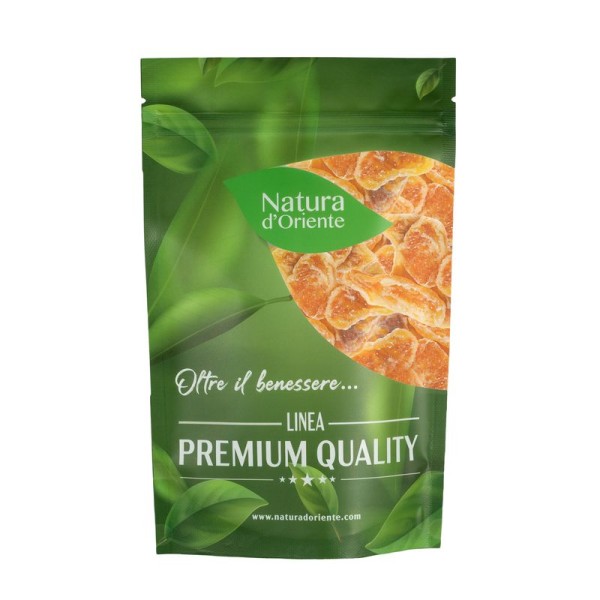









 No reward points for this product.
No reward points for this product.
